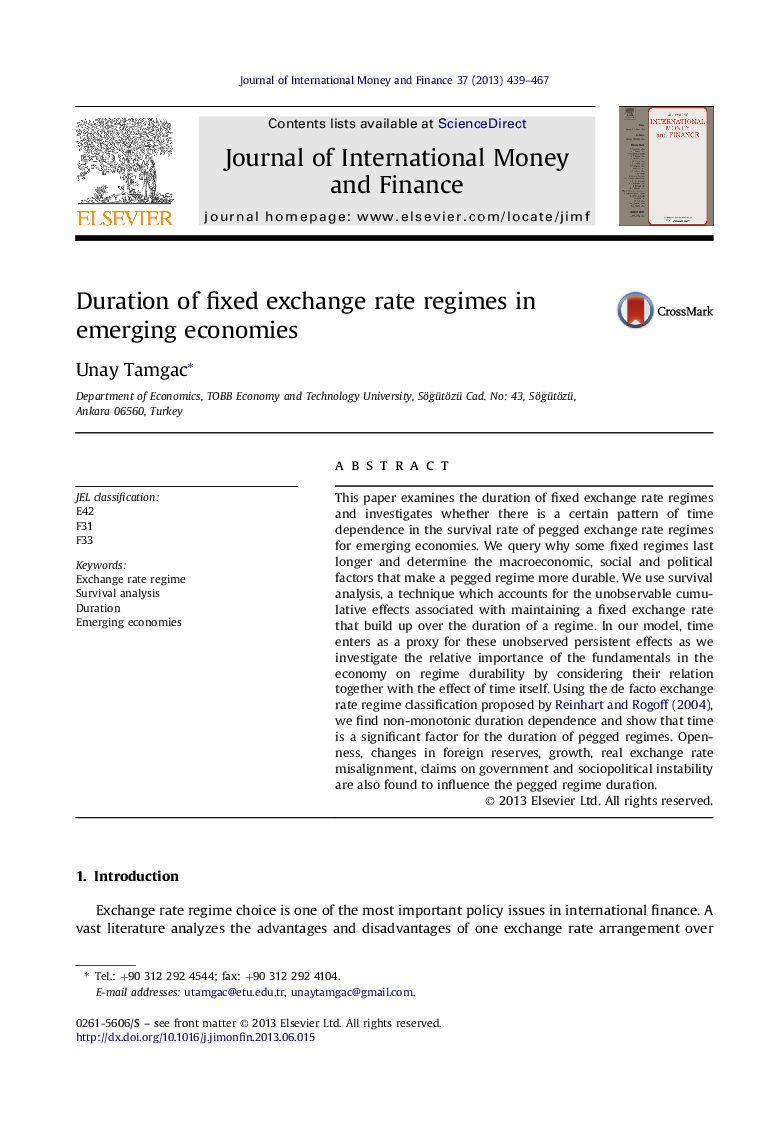| Article ID | Journal | Published Year | Pages | File Type |
|---|---|---|---|---|
| 964689 | Journal of International Money and Finance | 2013 | 29 Pages |
•The sustainability of fixed exchange rate regimes in emerging economies is analyzed.•The hazard rate is estimated via a Semi-parametric Cox model.•Pegged regimes in emerging economies have non-monotonic duration dependence.•Macroeconomic, socio-political factors of pegged regime duration are determined.•Regime duration is important for pegged regime sustainability in emerging economies.
This paper examines the duration of fixed exchange rate regimes and investigates whether there is a certain pattern of time dependence in the survival rate of pegged exchange rate regimes for emerging economies. We query why some fixed regimes last longer and determine the macroeconomic, social and political factors that make a pegged regime more durable. We use survival analysis, a technique which accounts for the unobservable cumulative effects associated with maintaining a fixed exchange rate that build up over the duration of a regime. In our model, time enters as a proxy for these unobserved persistent effects as we investigate the relative importance of the fundamentals in the economy on regime durability by considering their relation together with the effect of time itself. Using the de facto exchange rate regime classification proposed by Reinhart and Rogoff (2004), we find non-monotonic duration dependence and show that time is a significant factor for the duration of pegged regimes. Openness, changes in foreign reserves, growth, real exchange rate misalignment, claims on government and sociopolitical instability are also found to influence the pegged regime duration.
